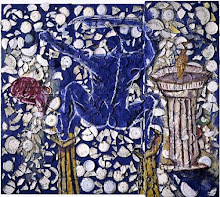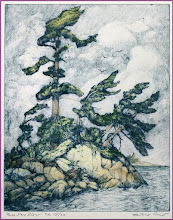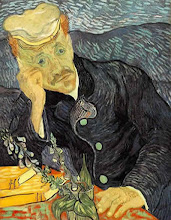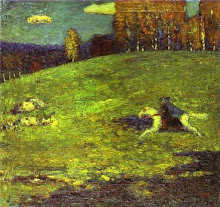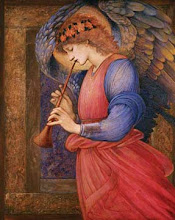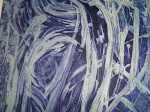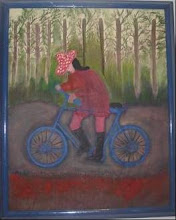When Arthur Ashe won the US Open at Forest Hills in 1968, the courts were made of clay and the players dressed in white. Only one other African-American, Althea Gibson, had risen so high in this white-dominated sport. A continent away, apartheid was law in South Africa. When Arthur Ashe applied for a visa to play in the South African Open in Johannesburg, he was turned down because of his skin color.
Decades after Ashe's death from AIDS, the courts are telegenic blue, players dress in multi colors, and African-American children dream of becoming the next Venus Williams or James Blake. Middle-aged white ladies who learned to serve at clubs that excluded African-Americans volunteer at Arthur Ashe Kids’ Day.
Now in its fifteenth year, Arthur Ashe Kids’ Day draws some 30,000 young fans who flock to the Billie Jean King Tennis Center in Queens, New York. Sponsored by a corporate entity (this year it was Hess) in partnership with the United States Tennis Association, the event is free, and requires the volunteer services of 550 adults.
I am proud to report that I was one of those volunteers, having applied to the United States Tennis Association many months in advance as well as attended a mandatory meeting in the Grand Hyatt Hotel in Manhattan, where I picked up my logo-emblazoned white cap and matching shirt.
So how do you insure that all 550 volunteers show up very early on a Saturday morning in their designated locations in a remote corner of Queens? You hold out the carrot of a meal card, worth $12.50 (which doesn’t get much, as one veteran AAKD volunteer sourly pointed out), and dispensed no later than 8:30 a.m.
There is nothing like the threat of missing a free lunch to light a fire under one’s middle-aged butt. After getting hopelessly lost in Queens, this AAKD volunteer found herself racing from remote parking area “G” to a shuttle bus to the South Gate, upon which she hurried through the security check-in to present herself, considerably out of breath, at the East Gate check-in table at 8:25.
On Court 7, Laura Puryear, a young woman in a safari-style hat from Oklahoma, was mobilizing our group of volunteers to the six mini-courts set up within the blue and white squares. Laura explained that all children would be given hand-ball-sized racquets, divided up into groups of four or five, and assigned to each mini-court, where volunteers would place two children on one side of the set, and two on the opposite side. The volunteer would then hand each child a large, foam-filled tennis ball from a hopper of similarly sized foam balls and instruct him or her to start rallying. As soon as one child made an error, he or she would step out and the next player would rotate in.
“It’s really a form of controlled chaos,” Laura joked. By ten o’clock, kids were jumping up and down as they waited in line behind the chain link fence, ready to prove to the world (or at least to their parents, who stood by with digital cameras) that they were Serena-and-Roger-wannabees. Some children had brought their own racquets, and some had the practiced strokes of longtime players. There was one six-year-old African-American boy with a metallic blue bandana and a wicked backhand who boasted that he had been playing since the age of two.
By noon, between the heat, the shrieks, the standing on achy feet, the disputes about what was in or out (with so many mini-courts, we were instructed to take a relaxed approach to line-calls), this volunteer was pooped. Laura suggested that I retrieve balls on the opposite side of the court, where there was less bedlam as well as some shade.
I did as I was told, and fell into conversation with two retirees from Long Island City. Neither played tennis—their grown-up kids had once been swimmers--but the couple were volunteer junkies. “We’ve done Ronald McDonald, United Way, you name it,” the husband said, to which the wife pointed out that studies showed that volunteering is good for you, and helps you live longer.
At 12:45, it was time to pack up the nets, racquets, and balls. Laura thanked each of us with a hearty high-five, and pronounced us free agents: we could have lunch, wander into Ashe stadium, or hang out among the outer courts, where various US Open qualifying matches would soon begin.
I had a second gig in Westchester doing dog-and-chicken sitting, and so after standing in a long line for a goat cheese salad from Stonyfield Farm, after watching a few of the women qualifiers warm up on Court 14, women with tree-trunk-like legs who screamed like Sharapova and made me feel a howl of regret that I was no longer so strong or so young, with such melancholy thoughts, I made my way to Parking lot “G.”
Then a young African-American man who was wearing the AAKD shirt and hat stopped me to ask about buses to Manhattan. He said he had to be back at the Grand Hyatt Hotel for a coaches’ meeting. I said I remembered something about buses at the East Gate, and pulled out my map.
We fell into conversation, where we were from, what we’d done for AAKD—he had been assigned to the “Beat the Pro” session on Court 17. His name was Kobe—his name was actually much longer but it was too hard for people to pronounce and everyone just called him Kobe. He was from Zambia, had been ranked in the top ten in the juniors and now taught tennis at a club in the Riverdale section of Manhattan. He loved the experience of being a volunteer at AAKD; he said it was important “to give back” as Arthur Ashe had done.
Kobe said his dream was to help kids in Africa learn how to play the game, that he had a scheme to send back used balls and tennis racquets to children in Zambia. We exchanged e-mail addresses and I said that I knew pros at Amherst College with whom I could connect him.
“Who knows,” I said, “Maybe my 16-year-old son and I will go to Zambia some day and work with you.”
“That would be awesome,” he said.
Then we shook hands and said goodbye, and I walked away, filled with love for life and tennis and New York. (Where else but in New York could such an encounter take place?) I thought of Arthur Ashe and the adversities he had overcome, beginning with struggling with racism in the South and ending with contracting AIDS from a blood transfusion in the North and how his life had not been about dejection and defeat but about triumph and generosity and goodness.
“From what we get,” Ashe once said, “we can make a living; from what we give, however, makes a life.”
All posts copyright© 2010. All rights reserved. No part of this blog may be reproduced or distributed without attribution and/or permission of the author
Introducing Frida von Zweig
3 years ago
